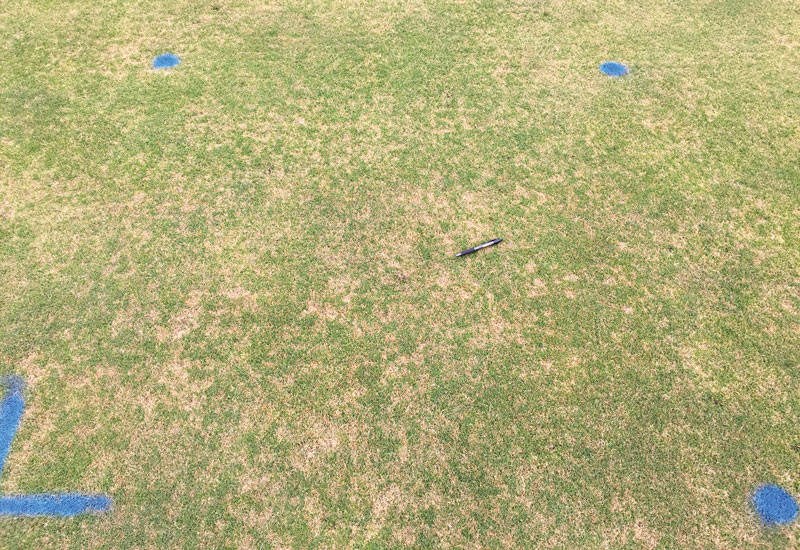
Photo by Paul Koch
Controlling dollar spot typically requires numerous fungicide applications in a single growing season. Earlier dollar spot prediction models were largely ineffective and are not currently in widespread use. The primary objective was to develop a new weather-based dollar spot prediction model to more accurately advise when to make fungicide applications to control dollar spot activity across a broad geographic and climactic range.
The new model, the Smith-Kerns dollar spot prediction model, was recently published in the peer-reviewed journal PLOS One, and was developed from data collected at field sites in Madison, Wis., and Stillwater, Okla., in 2008. The model was validated in the field from 2011 to 2016 at sites in Madison, Wis.; Stillwater, Okla.; Knoxville, Tenn.; State College, Pa.; Starkville, Miss.; and Storrs, Conn.
A meta-analysis of all sites and years was conducted, and the most effective model for dollar spot development consisted of a five-day moving average of relative humidity and average daily temperature. The model produces a probability that dollar spot will occur on a given day, and the highest probability that provided an effective spray threshold for dollar spot control across all sites and years was 20%, though this may change depending on local environmental factors.
Additional analysis in Madison, Wis., found that the 20% spray threshold provided control comparable to a calendar-based fungicide program while reducing fungicide use by up to 30%. The Smith-Kerns model can aid in making more accurate dollar spot fungicide applications based on environmental conditions.
Get more information and tools to implement the Smith-Kerns dollar spot prediction model.
— D.L. Smith, Ph.D., University of Wisconsin-Madison; J.P. Kerns, Ph.D., North Carolina State University, Raleigh; N.R. Walker, Ph.D., Oklahoma State University, Stillwater; A.F. Payne, Oklahoma State University, Stillwater; B. Horvath, Ph.D., University of Tennessee, Knoxville; J.C. Inguagiato, Ph.D., University of Connecticut, Storrs; J.E. Kaminski, Ph.D., Penn State University, State College; M. Tomaso-Peterson, Ph.D., Mississippi State University, Mississippi State; and P.L. Koch, Ph.D., University of Wisconsin-Madison
Teresa Carson is GCM’s science editor.